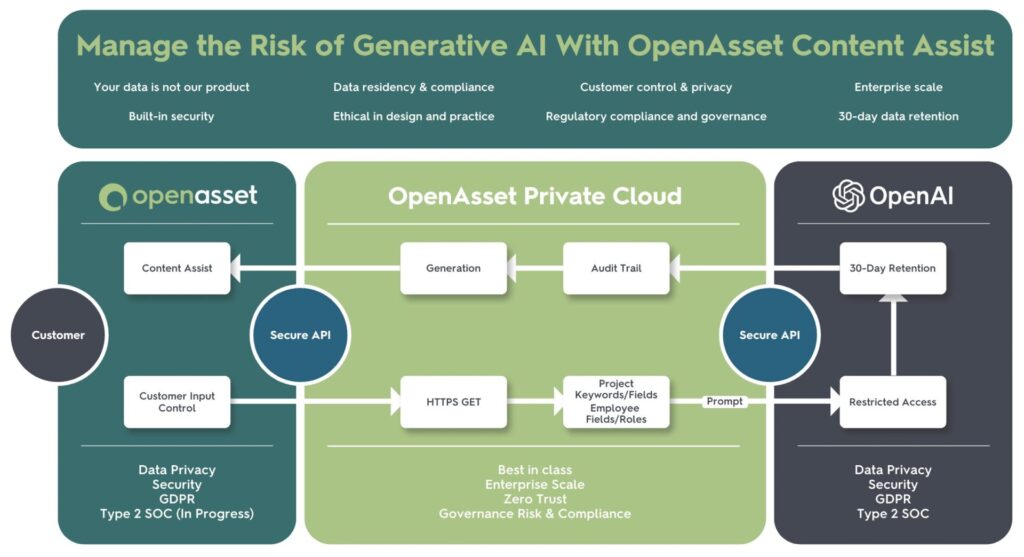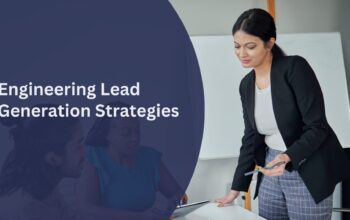The architecture, engineering, and construction (AEC) industry stands on the brink of a revolutionary shift, powered by artificial intelligence (AI). The OpenAsset + Unanet AI in AEC webinar, featuring Jason Janicki, CEO at OpenAsset, and Akshay Mahajan, EVP of AEC at Unanet, brought this into sharp focus, discussing the growth of AI in the AEC industry.
The event covered topics on current usage and future plans for incorporating AI into workflows, challenges and opportunities for AI adoption, and specific AI tools being used by clients.
Eager to dive in? Watch the complete webinar now to catch up on all the insights you may have missed.
Be sure to share this valuable resource with a colleague who could benefit from understanding AI within the AEC industry.
Meet the Experts
First, get to know the two speakers from the AI in AEC webinar, hosted by Derek Crosen, Head of Partnerships at OpenAsset.
Jason Janicki
Jason Janicki is the CEO of OpenAsset, a Digital Asset Management (DAM) system designed for AEC professionals. OpenAsset helps AEC firms centralize their AEC assets, create more proposals, and win more business. Jason’s background is in B2B customer-centric software with over 20 years of experience— 13 of those years being OpenAsset.
Akshay Mahajan
Akshay Mahajan is the Executive Vice President of AEC at Unanet, a solution focused on providing ERP and CRM software for AEC. In the past five years, Akshay has been in the AEC industry, working for Unanet. However, he has been in B2B software technology as a profession for more than two decades.
The Current State of AI in AEC
1. AI experienced the fastest growth across all 26 high-level software markets according to G2.
The fact that AI’s growth is more than double that of the second-fastest-growing market (Design) highlights the rapidly increasing interest and investment in AI technologies. This surge is likely due to AI’s potential to revolutionize a wide range of industries by enhancing efficiency, enabling innovation, and creating new opportunities for businesses to scale and evolve.
2. Available AI technology can automate approximately 25% of each marketer’s day, including your sales and proposal staff— (Zweig Group).
This suggests that a significant portion of routine, time-consuming tasks can now be handled by AI. This frees up your employees to focus on more strategic, creative, and complex aspects of their roles.
3. 80.5% of AEC professionals plan to use digital tools, including AI— (Zweig Group).
This underscores the industry’s readiness to embrace digital transformation. This high percentage reflects a recognition within the AEC sector of the benefits that digital tools and AI can bring. The willingness to adopt AI signals a shift towards more innovative, efficient, and competitive business practices in the AEC industry.
Moreover, the current state of the AEC landscape, with rising costs, staffing shortages, and increased competition, is also driving interest in AI. Software providers will need to offer compelling workflows that leverage AI to add value for clients.
“We had an internal study recently, just as we felt like we’re hearing more and more about this [leveraging AI to add value to workflows]. And from the second half of last year compared to the first half of last year, we had nearly a 60% increase in client and prospective client conversations, questions, support inquiries, and product requests related to AI.”
— Jason Janicki
The Current State of AI in AEC From the Audience
When the webinar audience was asked if they are currently using AI to optimize any part of their business development or marketing processes, the webinar poll results showed:
- 24% of participants are using AI in product, business development, and marketing
- 34% are using AI for marketing, and 36% are not currently using AI.
- 76% are planning to use AI to optimize their business development/marketing processes
The AEC industry has historically been slower at technology adoption compared to other industries, but in the last three to four years, it has skyrocketed.
Additionally, the results from the audience show that AEC firms are talking about AI and planning to use it. Other industries have already started implementing AI to cut spending and improve efficiency, and AEC firms should be proactive in thinking about use cases for AI.
Challenges for AI in AEC
Now, let’s look at the challenges and opportunities for AI in AEC. When asked about the biggest challenges for AI in AEC over the next 5 years, the results showed:
- Data quality and accuracy at 44%
- Data privacy and security is a challenge at 40%
- Talent and skills gap at 13%.
Data Quality and Accuracy
When discussing data quality, Akshay says it’s unsurprising to see it identified as the biggest challenge by many.
This echoes a widespread sentiment: without foundational data, AI is meaningless. AI thrives on data; it requires information to apply its algorithms and produce valuable insights. Without this, the potential of AI remains untapped.
Additionally, diving deeper into the matter of data quality, a critical obstacle emerges for those aiming to leverage AI technology: the absence of a single source of truth within an organization.
A single source of truth means having a centralized repository for all relevant data that reflects the company’s activities, from business development to project management. Without centralized data, effectively utilizing AI tools becomes a challenge. This concept extends beyond just having a repository; it demands accurate, reliable data. For companies that have established a single source of truth, the next step is to ensure data quality.
Imagine a scenario where a firm has centralized its project pipelines but faces inconsistencies in data entry or accuracy. Addressing and improving these data quality issues becomes essential. Ensuring accurate and comprehensive data collection and maintenance is necessary for harnessing the full potential of AI technologies.
As firms progress toward this goal, establishing a single source of truth for various facets—such as project descriptions, proposal writings, and sales pipelines—serves as the foundational step.
Data Privacy and Security
With tools like ChatGPT, the AEC industry faces a significant challenge: data privacy and security. The essence of generative AI technology lies in its ability to produce refined outputs with the data it receives. However, this raises critical concerns about the type of data corporations can safely input into public domains without compromising security.
Akshay highlighted this concern and gave an example of a firm that does 70-80% of its work through government contracts and leverages ChatGPT to get an answer to a Request for Information (RFI). This poses a risk to the company from litigation and other aspects.
This incident also highlights the inherent risks associated with government contracts and the importance of adhering to confidentiality/ non-disclosure agreements. Therefore, it’s imperative for businesses, especially those dealing with sensitive or government-related work, to exercise caution with AI.
Adopting AI: Mid-Level Management
Jason highlighted that many firms encounter obstacles due to the absence of clear, top-down directives for AI integration, resulting in a disconnected, bottom-up approach that rarely achieves desired outcomes.
He stressed the importance of proactive involvement and leadership, particularly for mid-level and senior marketing professionals, in steering AI adoption strategies.
Moreover, a significant barrier is the resistance within mid-level management, where concerns about AI’s relevance or the perceived complexity of integrating AI into existing workflows hinder progress.
To combat this, Jason shared insights from his own experiences at OpenAsset, emphasizing the implementation of clear AI initiatives anchored by themes such as efficiency and speed. He advocated for regular internal surveys and open communication to monitor adoption progress and highlight early successes.
An example he used to illustrate this was when a colleague shared how leveraging ChatGPT for compiling interview notes during candidate assessments resulted in a time saving of five to ten minutes per interview, quickly becoming an integral part of my workflow. This example underlines the value of internal innovation and the importance of sharing these successes to inspire widespread adoption.
AEC Recruiting Challenges: Skill Shortages and Talent Gaps
The effective use of AI in marketing requires skilled professionals who understand both marketing strategies and AI technologies. There is a shortage of talent with expertise in both domains, making it challenging for organizations to fully leverage the potential of AI in their marketing efforts.
As AI progresses, the focus shifts toward the capability enhancement of a company’s team. The question arises: How do we effectively upscale our workforce, and what strategies do we employ to ensure the smart use of AI among our most skilled professionals? Establishing these parameters is essential as we aim to empower our employees, ensuring they are equipped to navigate the evolving landscape of AI integration.
It’s an essential task to upskill employees to harness AI effectively. AI tools, when in the hands of skilled workers, can unblock and inspire creativity in areas ranging from content creation to software development, leading to success.
The journey toward fully integrating AI within a firm involves not only identifying and promoting internal use cases but also establishing guidelines to ensure its effective and responsible use, particularly among the most capable employees.
Through such measures, firms can navigate the complexities of AI adoption, fostering an environment where technology augments talent and propels the AEC industry forward.
Opportunities for AI in AEC
Now that we’ve taken a look at the challenges for AI in AEC, let’s take a look at the opportunities.
Expedite Mundane Tasks with AI
When asked, what you see as the biggest opportunities for AI in AEC over the next 5 years, efficiency for mundane tasks is the front-runner at 73%. Efficiency and mundane tasks are where people are leaning in to start. After all, AI is about automating repetitive tasks and making them more natural.
The potential of AI to enhance efficiency, especially with mundane tasks, is an opportunity too significant to overlook. This ease of adoption makes it an ideal starting point for anyone looking to integrate AI into their workflows.
Efficiency in routine activities not only saves time but also opens the door to higher-quality outcomes with lower effort. AI’s ability to handle mundane tasks is perhaps its most accessible application, requiring minimal barriers to entry. Tools like ChatGPT and others are readily available, allowing individuals and teams to make immediate improvements in their daily operations.
Use AI for Analysis
Jason shared a compelling example of AI’s application in enhancing proposal creation. In this case, a team was crafting a proposal and wanted to ensure it differentiated itself from competitors.
By inputting details about the proposal and the project into AI tools, they were able to analyze the language and interests of key decision-makers involved in podcasts and webinars. This enabled the team to tailor their proposal to the preferences and language of specific groups, increasing their chances of success.
This example underscores how AI can transform even the most mundane tasks into opportunities for innovation and differentiation. AI’s practical applications often begin with simplifying routine tasks and set the stage for more complex and creative uses.
AEC Retention
In the AEC industry, AI emerges as a powerful ally in addressing AEC recruiting challenges, such as AEC retention. Through predictive analytics, AI can forecast potential turnover, allowing firms to intervene proactively by tailoring incentives and career development opportunities to individual needs.
This level of personalization demonstrates a commitment to each employee’s growth, fostering a sense of belonging and satisfaction.
Additionally, going back to the topic of AI for mundane tasks, AI enhances the workplace experience by automating mundane tasks, optimizing team dynamics, and ensuring safety on project sites, thereby allowing employees to focus on more rewarding aspects of their work.
The implementation of AI-driven strategies not only boosts employee engagement and job satisfaction but also cultivates a positive work environment that encourages professionals to stay and thrive within their roles.
By leveraging AI, AEC firms can significantly improve AEC retention rates, ensuring they maintain a skilled and motivated workforce ready to meet the demands of an ever-evolving industry.
AI Tools and Use Cases in AEC
In AEC, innovative AI tools are transforming the way firms approach content creation, presentation design, and even how they manage their brand’s digital presence. Let’s delve into some notable tools and their applications as shared by industry experts.
Jasper.AI
Akshay highlights Jasper.AI— a standout tool that has caught the attention of several AEC firms over the past six months is Jasper.AI. Praised for its content creation capabilities, Jasper.AI is an enterprise-level tool designed for crafting written material.
What sets it apart is its ability to operate privately, ensuring that data remains confidential and not exposed publicly.
Additionally, it offers features to tailor content to a firm’s unique brand tone and voice. This tool has been particularly useful for AEC firms in generating blog posts, offering a practical starting point for those exploring AI-driven content creation.
Beautiful.AI
AI tools for AEC don’t stop at content creation. Beautiful.AI, an example shared by Jason, has become a favorite for its streamlined approach to visual presentations. Its ease of use for designing and incorporating graphs from datasets makes it an invaluable tool, so much so that it’s been adopted for internal use by OpenAsset. You can see Beautiful.AI in action in our Trailblazers 2024 webinar.
Beyond presentations, AI is making strides in image creation and design work, with tools like Schema AI enhancing marketing decks with creative flair.
Photography AI
An intriguing development in the world of professional photography is the emergence of AI tools capable of generating professional-looking headshots, such as HeadshotPro, from simple phone snapshots. This advancement represents a significant shift from traditional photography, offering convenience and quality.
Social Media AI
There are also AI tools designed for social media management, such as Sprout Social and Brandwatch, helping AEC marketers.
Current and Future AI Investments
In the rapidly evolving domain of AI, firms are increasingly harnessing AI tools to transform their operations and services. Let’s explore the current and future commitments to AI within the industry, focusing on innovative applications and the roadmap ahead.
OpenAsset
Here’s how OpenAsset currently implements AI and how we plan to improve in the future:
Current AI Tools in Use
OpenAsset has integrated AI into its platform, leveraging tools like similarity search, which employs AWS recognition to swiftly locate and tag related images. Other features include AI-suggested keywords that provide both general and AEC-specific keyword suggestions for each image.
Additionally, AI Content Assist allows users to safely leverage existing Project and Employee data to accelerate the creation of project descriptions and employee bios.
Here’s how Content Assist Works:

These implementations showcase AI’s potential to streamline tasks and enhance data organization and accessibility, without compromising security.
Future AI Investments
Looking forward, OpenAsset aims to introduce advanced AI capabilities, such as visual and natural language search, facilitating an intuitive search experience that transcends traditional tagging systems.
Moreover, the development of facial recognition technology is anticipated to improve data management and compliance with regulations like GDPR.
Unanet
Here’s how Unanet currently implements AI and their plans for the future:
Current AI Tools in Use
Over the past few years, Unanet has contemplated the integration of AI and even incorporated machine learning into its offerings.
One notable feature, signature passing, showcases Unanet’s early ventures into AI, enhancing their product with smart, time-saving capabilities. Their work in AI is categorized into three main areas: predictive AI, improving data quality, and generating content.
Moreover, Akshay shared insights into several key projects illustrating Unanet’s AI ambitions. The WinSmart project stands out, employing machine learning to evaluate past opportunities and pursue data, providing a predictive score to help decision-making processes.
This initiative underscores Unanet’s commitment to enhancing data quality at the point of entry and utilizing generative AI for creating initial project descriptions and streamlining content creation for marketers.
Future AI Investments
Unanet and OpenAsset are dedicated to developing AI tools specifically designed for AEC processes. This approach will provide AEC firms with bespoke AI tools that reduce extensive customization, making AI more accessible to all.
AI’s Future: Big Changes in AEC
The AEC industry is at an exciting turning point, thanks to AI. The recent webinar with OpenAsset and Unanet shed light on how AI is growing in the AEC world, discussing both the technology’s current uses and what’s coming next. This event was a deep dive into how AI can make the AEC industry work smarter and more efficiently.
Adopting AI isn’t just about keeping up with tech trends—it’s about setting AEC firms up for long-term success. The future, as seen through this webinar, is one where AI is a key player in AEC workflows.
This is a journey of embracing new technology that promises to make the AEC industry even more revolutionary and competitive.
Ready to learn more about implementing innovative tools at your AEC firm?



